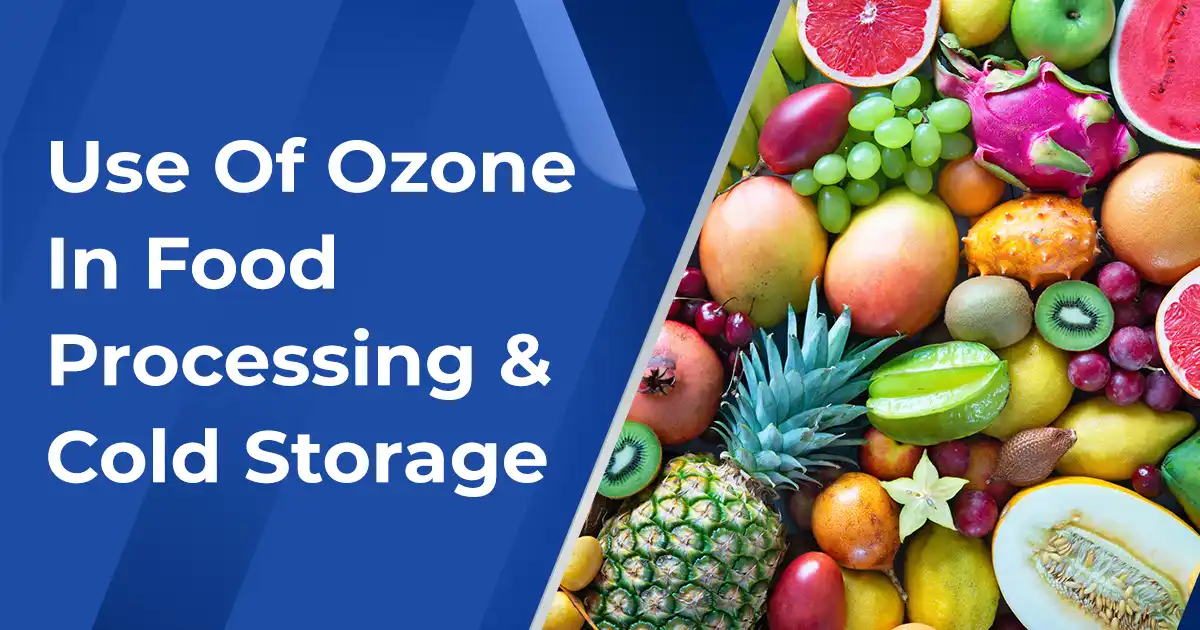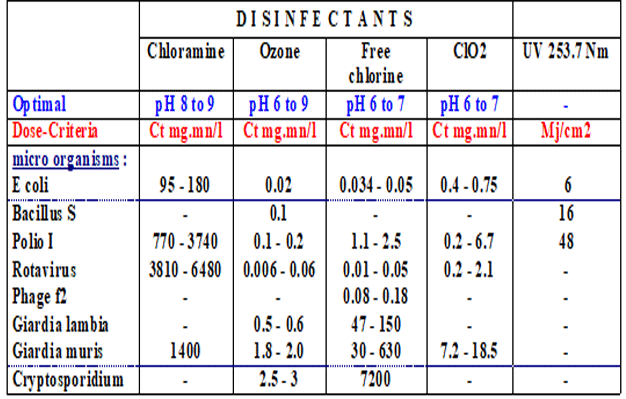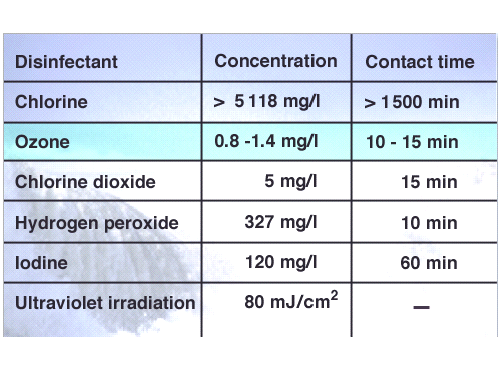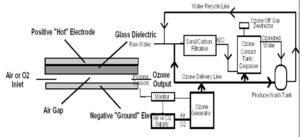Use Of Ozone In Food Processing & Cold Storage

The presence of numerous genera of spoilage bacteria, yeast and moles and a vocational pathogen on fresh produce has been recognized for many years. The consumption of fresh vegetables has resulted in several out breaks of human gastero-enteritis. Fruits, salads contains raw vegetables have also been identified as a cause of travelers diarrhea.
E-Coli is a most common cause of this illness. Outbreaks of salmonella infection have been attributed to consumption of contaminated tomato, beans, sprouts and watermelon. Gastroenteritis has also occurred by the consumption of raw onions, fresh cabbage and lettuce.
Viruses are not likely to grow on contaminated vegetables and fruit but can survive long enough to cause life-threading illness in human.
Like wise methods of handling, processing, packaging and distribution of fresh produce have also attributed to microbiological contamination.
DURCES OF PATHOGENIC MICROORGANISMS.
Fruits and vegetables can be contaminated with pathogenic microorganisms while growing in the fields or orchards, or during harvesting, post harvest handling, process and distribution. Pathogens capable of causing human diseases include bacteria, viruses and parasites that are present in the water use for irrigation or in the soil in which they are grown. These pathogens have been proven to exist and are a concern on in international scale.
Infection such as Hepatitis A have been caused by viral food contaminants. Viruses can be excreted in large number by infected individual and have been isolated from sewage and untreated wastewater used for crop irrigation.
Current methods
The methods currently available for disinfection and sterilization are through the use of Oxidative and non-oxidative Biocides. The most predominant is the use of Chlorine compounds- generally Hypochlorite. Non oxidative biocides are usually used for disinfection but sometimes in food processing. Washing produce in water can effectively remove sand, soil and other derbies from fresh fruits and vegetables but should not be relied upon to completely remove microorganisms.
Fruits and vegetables not uncommonly contain population of 104 to 106 microorganisms per gram when they arrive at the packing house or processing plant. Only 1 to 2 log unit reduction can be obtained by washing with water. Using chlorine cannot be totally relied upon as a disinfectant for fresh produce as has only about 1 to 2 log unit reduction of microorganism take place. Chlorine has never been useful for removing virus contamination. Even the use of trisodium phosphate (TSP) in wash water have not been found very effective and have been found to reduce microorganisms only to about 2 log unit reduce.
Problems with current Methods
The disadvantages of non oxidative biocides are that the process of disinfection often may not be complete (in the concentrations used) or some bacteria may be resistant and the preferred procedure is the use of oxidative biocides. Using non oxidative biocides in food preparation is also limited in that they may impart some undesirable taste and cause problems in preparation such as frothing etc.
Chlorine in any form though having been used for decades, have now been found to produce very toxic and carcinogenic byproducts which create as much problem as it solves. Firstly some organisms may survive even after the process as using higher concentrations which may be impractical may only kill them. Further Chlorine itself imparts some flavor not accepted by consumers. Some other types of disinfectants have to be sourced. Hydrogen peroxide is one, which is now viewed as an alternative, in that it is a reasonable oxidant and the byproduct is water, but the overall costs make it rather less attractive alternative.
Ozone was known for quite sometime now, more than 20 years now. Ozone has been used in disinfection of water for quite some time now , but it is only now that its use in food processing and cold storage has been recognized
What Is Ozone?
A Tri-atomic oxygen ,Ozone has a very high Redox potential, only next to Fluorine .By Virtue of this high Redox potential Ozone is more than 3000 times powerful disinfectant than chlorine .Ozone is regarded as the most effective disinfectant agent commercially .Ozone is an eco friendly chemical gas that does not produce environmentally toxic by- products ( chlorinated hydrocarbons for instance)
OZONE IS “GENERALLY RECOGNIZED AS SAFE” (GRAS)
In the United States, a substance either has to be declared to be “Generally Recognized as Safe” (“GRAS”) by a recognized panel of food experts, or approved as a “food additive” by the U.S. Food and Drug Administration for its use to receive widespread acceptance. Although widely used in Japan, Europe and Australia, without the formal GRAS affirmation, the process for gaining approval for ozone’s use via the FDA’s Food
Additive Petition route was exceedingly laborious and had to be completed for every commodity. As a result, ozonation applications in the U.S. food processing industry have been limited.
Ozone a few years back has been declared to be GRAS by a panel of food experts established by the Electric Power Research institute (the EPRI) This allows the unrestricted use of ozone in any food processing application other than meat, dairy, or poultry processing applications (ozone also has a number of applications in these industries which are regulated by the U.S. Department of Agriculture).
Reference will be made to the possibility for the quick and efficient destruction in an ozone atmosphere of various non-pathogenic micro-organisms including molds, spores and other primitive single cell creatures. The wide ranging possibilities for using ozone in the food industry and agriculture as well as in other fields, are created similarly by it’s bacterial and germ killing power. Not only does it act as a germicide but as a spore killing agent as well. Fruits, foodstuffs, etc., exposed to its effect, under go a more or less pronounced change as a consequence of it’s action on the vital process of cells, the process of there metabolism particularly, through the inactivation of their metabolic products. At the same time it reacts with other materials present that can be oxidized and thereby it destroys fragrances and odors.
OBJECTIVES FOOD PROCESSING PROCESS & STORAGE TREATMENT OBJECTIVES
Three Primary objectives can be identified in treatment of food
Treatment of food for any application, whether for additional processing or direct distribution to consumers, has three primary objectives for consumers:
Objective 1. Sanitisation
Food for human consumption must be free of pathogenic organisms . Contamination can occur from the Harvesting Stage, during transportation, during processing through water, equipment or the human element or even by cross contamination.
Objective 2. Stop spoilage or over ripening
Food industry is Global and hence it is practically impossible to reach the food to the consumers across the world in an unspoiled manner , ripe or nearly ripe. The customer would like to see the food fresh and I an undamaged condition. It must be free from bacterial or fungal contamination, free of foul odor and ,taste .These standards alone will provide consumer satisfaction.
Objective 3. Remove contaminants. Fungicides, pesticides used during farming can contaminate the surfaces of the food and this can be potentially dangerous .Of late more consideration has been give to this factor .Removal or destruction of these contaminants is of prime most importance
World wide acceptability of Ozone
Wide spread acceptability of Ozone has made it very popular in Food Processing Today. The properties of Ozone has allowed its unrestricted and any food processing application .Ozone has been demonstrated as the most effective Biocide with significantly increased lethality .Ozone requires very low contact time compared to Chlorine and requires much lower concentrations for effective kill ,compared to conventional biocides
For Example E-Coli is inactivated in 15 seconds at ozone concentrations as low as 0.1mg/liter. With a contact time of just around 1 second , there could bea 3 log reduction of E Coli .( see Graph below)

Destruction of E-Coli by Ozone – Lightning fast and sure
The Mechanism of action of Ozone by direct lysing of the bacterial cell wall brings about an immediate kill of the pathogens. Unlike Ozone Chlorine acts by getting transported through the cell membrane where they interfere with nuclear reproductive mechanism or enzymatic reactions of cells. This is a slow process.
Viral Inactivation: The table below provides a glimpse on the activity of ozone against viruses

Disinfectant Dose to Obtain 99% micro-organism inactivation (Water Temp. 5 °C)
Polio virus types I, II, III are inactivated 99% when exposed to ozone in very low concentrations of 0.3 pp for 3 minutes .Ozone is also very active against Rotavirus, Bacteriophages, adenovirus, entero virues, Hepatitis A Virus, an action not consistent with other biocides
Ozone action against unicellular organisms such as Giardia and Cryptosporidium ( the most difficult to eradicate) is amply demonstrated in the table below. Conventional bicides like chlorine require hours compared to minutes for ozone

Concentrations and Contact times for a 90% reduction of Cryptosporidium Parvum
Retardation of Spoilage or over ripening:
Ozone Charged water provide superior surface disinfection of Fungi, Bacteria, virus and spores . The food surface is virtually sterilized.
Oxidation of Ethylene
Ethylene (C2H4) undergoes complete oxidation in the presence of ozone, as outlined by
the following reaction.
C2H4 + 6O3 2CO2 + 2H2O + 6O2
The final products of this reaction are carbon dioxide, water, and oxygen.
Incomplete oxidation of ethylene due to insufficient amounts of ozone during reaction
can lead to any of the following products:
C2H4 + 2O3 H2C (OH) CH2 (OH) + 2O2 (Ethylene Glycol)
Ethylene glycol is a very stable alcohol, but very susceptible to further oxidation.
H2C (OH) CH2 (OH) + 2O3 2HCO2H + 2H2O + 2O2 (Formic Acid)
Formic acid is an irritant; however, it reacts with oxygen at a very fast rate. Its reactivity
with oxygen is catalyzed by very fine dust particles and contact with high surface area
silicates. . 2HCO2H + 2O3 2CO2 + 2H2O + 2O2.
Ethylene formation on the food surface is responsible for food ripening and spoilage. By virtue of its chemical properties, ozone prevents Ethylene formation and there by retards ripening and spoilage by micro organisms. This property extends the shelf life of the food (by preventing spoilage) . The magnitude of this can be perceived if we are aware that in India, more than Rs 50,000 Crores of rupees are wasted per year on account of food spoilage.
Ozone In Cold Storage:
Utilization of the properties makes ozone eminently suitable for increasing the storage life of perishable foods in refrigerated premises. At the same time it’s use is economic as the investment and operational costs of the equipment are on a acceptable level in relation to the size of refrigerated rooms. Its application eliminates the risk of leaving the unpleasant odor or other traces of antiseptics used for preservation on food stuffs.
Utilization of ozone for increasing the storage life of food, particularly if held at low temperatures, is believed to have started in 1909 when, in the cold storage plant of cologne, the reduction in the germ count on the surface of meat stored there was observed after an ozone generator had been installed in the duct of fresh air used to ventilate the storage room.
Practical operations for preservation start with the sterilization of air in such a way that air entering the storage room contains a sufficient amount of ozone to destroy micro-organisms. At the same time, however, ozone decomposition to a significant extent is to be expected due to the high moisture content required, the walls of the storage room, the packaging materials, the absorption effect of the stored goods, and also to the oxidation reactions taking place.
These two requirements demand the most perfect distribution of ozonized air in the storage room and make it imperative that the capacity of the ozone generator ensures the maintenance of the appropriate ozone concentration throughout the whole mass of air. This is an application need .
During storage, ozone exerts a threefold effect by destroying the micro-organisms, oxidizing the odors and affecting the processes of metabolism.
It’s primary action on molds is to suppress there growth and this effect can set in rapidly, particularly in the initial stage on a mold free surface. Afterwards this process leads to the destruction of cultures already formed. Ozone attacks immediately the easily accessible cells on the surface since ozone exerts a surface effect in the first place and has a only slight depth of penetration.
Ozonization applied for the storage of refrigerated meat destroys surface micro-organisms, particularly the family of Pseudomonas responsible for spoilage.
Increasing the moisture content of the environment favorably influences the germicidal effect. This is brought about by the swelling of microbes making them more susceptible to destruction. Experiments conducted with beef showed that ozone is most efficient if the surface has a definite moisture content of around 60%.
EFFECT ON ODORS
Ozone itself has a characteristic odor, yet the result of application does not mask odors. Atomic oxygen formed by decomposition of ozone immediately oxidizes the differently smelling materials.
The characteristic putrid odor, however, remains and is difficult to eliminate even with the use of ozone. In general, the lower the temperature and the larger the molecules taking part in the reaction, the weaker is the oxidizing effect. The moisture content in the air has no effect on the process. At very slight concentration, say between 0.01 and 0.04 p.p.m. ozone, the air of the room of storage space is felt to be fresh and pleasant and no stuffy odor is sensed any more.
It is an established fact that the odor of aromatic fruits such as strawberries is enhanced in the presence of ozone. It is possible that the formation of fragrances and odors giving the fruit its characteristic flavor is assisted by ozone. The sterilization of the air in fruit stores by ozone prevents the odors of packaging materials from being transferred to the goods stored, a phenomena which frequently takes place otherwise, particularly when wooden crates are used in refrigerated stores at relative humidity of 85% to 90%
EFFECT ON METABOLISM
The effect on metabolism is also a consequence of the strong oxidizing power of ozone. No deterioration of fruit was observed, but the reason for this is that ozone only affects the surface of fruit which contain compounds difficult to oxidize in most cases. During storage the process of respiration of fruit is speeded up and so is ripening. In the case of a more rapid ripening than would be desirable, ethylene is produced which affects the other fruit and so initiates even more intensive ripening. The external signs of this process are the turning brown of the skin, the softening of the flesh of the rest of the fruit and, finally, decay. This process is controlled by the presence of ozone because it oxidizes the metabolic products created initially, reducing thereby the process of back action on other fruits. Moreover, it promotes the healing of wounds and enhances resistance to further infection.
Ozone in CIP in Food Industries (Clean In Process) : Ozone charged water is now utilized for CIP for cleaning of pipes, tanks , floors , surfaces of equipments etc
Recycle of Water – An Advantage with Ozone Systems in Food Processing

A typical ozone System Installation in Food Processing:
Obviously the raw water has to undergo a typical classical treatment train before ozonation. One advantage of an Ozone system in food processing is that it provides the user an opportunity to look into the REUSE of the water .This could bring about lots of savings especially if there is a cost to water and availability concerns.
The water has to undergo a simple filtration process before it can rejoin the ozonation stream for recycling.
Availability of Plug and Use Ozone Systems
The application of ozone has been simplified by the availability of plug and use systems that provide ozone charged water at required residuals for different applications in the Food processing Industries. The Systems available are fool proof and very reliable providing the users the confidence required to adopt such newer technologies .The systems can be totally automated requiring very little attention


